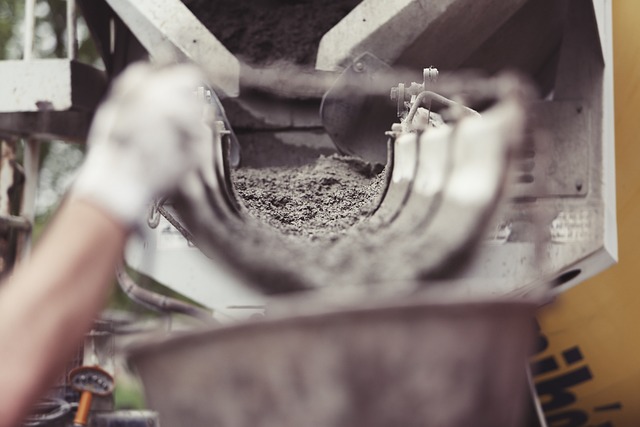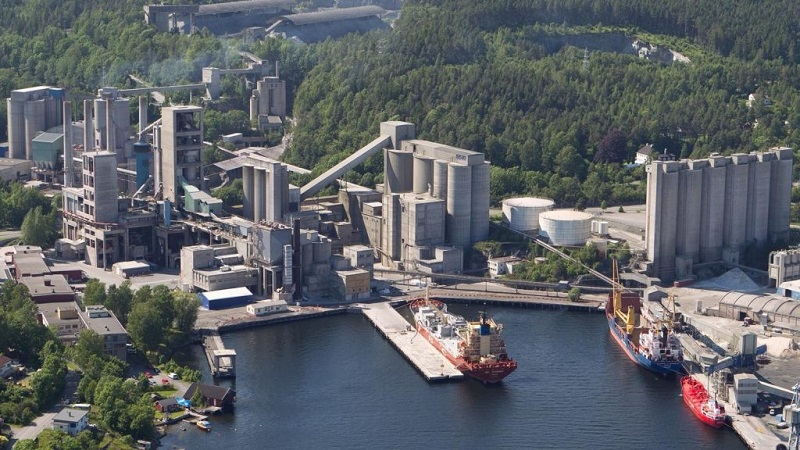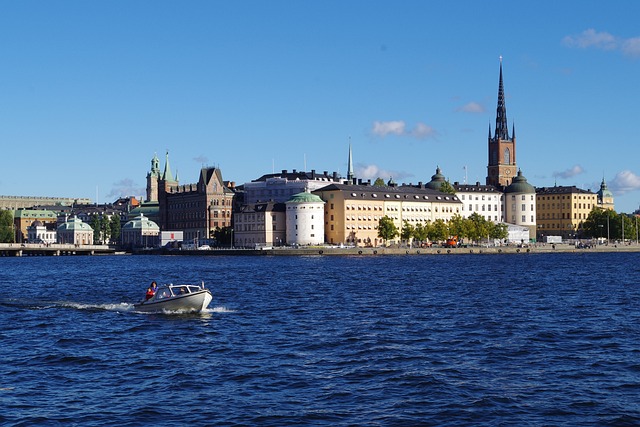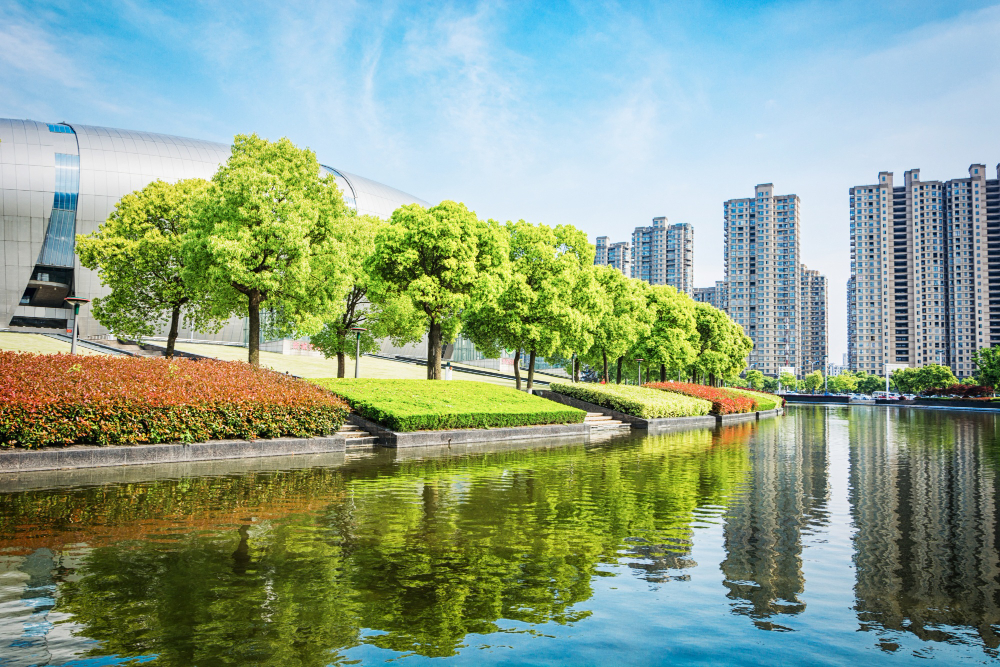
evoZero Cement is a cutting-edge material designed to achieve net-zero carbon emissions by incorporating innovative production processes. Several forward-thinking cities are interested in utilizing this sustainable cement to reduce their carbon footprint and promote eco-friendly construction practices. The construction industry is a significant contributor to global carbon emissions, primarily due to the traditional production processes of cement, a key material in concrete. In response to growing environmental concerns, innovative solutions like evoZero cement are being developed. This article explores evoZero cement, its manufacturers, the goals for net-zero carbon emissions, the technology behind its production, and the cities leading the charge in adopting this sustainable material.
Who is Making evoZero Cement?
evoZero cement is produced by Heidelberg Materials, a prominent player in the construction materials sector. Their commitment to reducing carbon footprints in the construction industry has led to the development of evoZero, a cement designed to achieve net-zero carbon emissions. Heidelberg Materials aims to cut CO2 emissions by 50% by 2030 and achieve carbon neutrality by 2050, in line with EU goals.
Goal for Net-Zero Carbon Captured Cement
The primary goal of evoZero cement is to drastically reduce, and ultimately eliminate, the carbon emissions associated with cement production. This aligns with global efforts to combat climate change and meet targets set by the Paris Agreement. By achieving net-zero carbon emissions, evoZero cement aims to transform the construction industry into a more sustainable sector, contributing to healthier environments and reducing the ecological impact of urban development.
How the Cement Production Plant Works
Cement production worldwide accounts for approximately 6-7% of all carbon dioxide emissions, most of which comes from the chemical reaction that forms the basis of the product. Approximately 65% of the carbon dioxide produced is released when limestone, the raw material, is cooked in the kiln, while the remaining 35% is released from the cooking process used to obtain the cement. The production of evoZero cement involves innovative processes that capture and store carbon dioxide (CO2) emitted during cement manufacturing. Here’s a breakdown of how a typical evoZero cement production plant operates:
- Raw Material Preparation: The primary raw materials for cement, including limestone and clay, are processed and ground into a fine powder.
- Heating and Calcination: The powder is heated in a kiln at high temperatures. Traditionally, this stage emits significant CO2. However, evoZero plants incorporate carbon capture technology that captures the CO2 before it is released into the atmosphere.
- Carbon Capture and Storage (CCS): The captured CO2 is either stored underground in geological formations or utilized in other industrial processes. This technology significantly reduces the net carbon emissions of the plant.
- Blending and Finishing: The calcined material is mixed with other compounds to produce cement. The final product is then packaged and distributed for use in construction.
Technology Behind evoZero Cement
The technology behind evoZero cement centers on Carbon Capture and Storage (CCS) and other innovative approaches such as Carbon Capture and Utilization (CCU). Here are the key technologies involved:
- Pre-Combustion Capture: This method involves removing CO2 before the combustion process, making it easier to capture and store.
- Post-Combustion Capture: CO2 is captured after the combustion process, usually from the flue gases emitted by the kiln.
- Carbon Utilization: Captured CO2 can be used to create other materials, such as carbonates, which can be integrated back into the cement production process or used in other industries.
- Renewable Energy Integration: evoZero plants often incorporate renewable energy sources, such as solar or wind power, to further reduce the carbon footprint.

Image source : heidelbergmaterials
Brevik CCS Plant: A Key Milestone
One of the most significant developments in evoZero cement production is the Brevik CCS plant in Norway. Due for completion in late 2024 and expected to enter production in 2025, the Brevik facility is the first large-scale cement plant to incorporate a carbon capture system. It will be able to capture and store 400,000 tonnes of CO2 per year, equivalent to 50% of the plant’s emissions. This facility sets a new benchmark for the cement industry and underscores Heidelberg Materials’ commitment to sustainable practices.
evoZero Variants and Blockchain Transparency
evoZero cement will be available in two variants:
- evoZero Carbon Captured Brevik: Delivered directly from the Norwegian cement plant, achieving a net-zero footprint over its entire lifecycle.
- evoZero Carbon Captured: Available in other countries, like Italy, leveraging CO2 savings from the Brevik plant to achieve a net-zero footprint on delivery.
The CO2 capture characteristics of both products are transparent and traceable through blockchain technology, providing verifiable proof of the carbon savings linked to the purchase of evoZero. Mechanisms for accounting for CO2 capture and emissions, such as mass balance and book-and-claim, are independently reviewed by a third-party verifier.
Top Cities Interested in evoZero Cement
Several cities worldwide are showing keen interest in adopting evoZero cement due to its environmental benefits. Here are some leading examples:
- San Francisco, USA: Known for its progressive environmental policies, San Francisco is exploring the use of evoZero cement in new construction projects, particularly in public infrastructure and green buildings.
- Copenhagen, Denmark: As a city aiming to become carbon-neutral by 2025, Copenhagen is incorporating evoZero cement in its urban development plans, including the construction of eco-friendly residential and commercial buildings.
- Stockholm, Sweden: Stockholm’s commitment to sustainability is evident in its adoption of evoZero cement for various projects, such as sustainable housing developments and public works.
- Singapore: With its rapid urbanization and focus on green construction, Singapore is testing evoZero cement in several pilot projects, including government buildings and smart city initiatives.
- Vancouver, Canada: Vancouver’s Greenest City Action Plan aligns well with the use of evoZero cement. The city is integrating this sustainable material into its infrastructure projects to meet its ambitious climate goals.
- Milan, Italy: Milan aims for zero emissions by 2030 and views evoZero cement as essential for achieving its CO2 reduction objectives. The city’s emphasis on sustainable construction makes evoZero an ideal choice for its urban development projects.
Major Construction Projects Using evoZero Cement
The Salesforce Tower, San Francisco, USA

San Francisco is a leader in sustainable building practices, and the Salesforce Tower, one of the tallest buildings in the city, has incorporated evoZero cement in its construction. This iconic skyscraper, standing at 1,070 feet, is a testament to the city’s commitment to reducing carbon emissions in its urban development projects. The use of evoZero cement has significantly lowered the building’s carbon footprint, setting a benchmark for future high-rise constructions in the region.
Nordhavn District, Copenhagen, Denmark
Copenhagen’s ambitious plan to become carbon-neutral by 2025 includes the extensive use of evoZero cement in the redevelopment of the Nordhavn district. This project aims to transform a former industrial area into a sustainable urban district with residential, commercial, and recreational spaces. The use of evoZero cement is crucial in meeting the district’s sustainability targets, ensuring that the construction process aligns with the city’s environmental goals.

Royal Seaport, Stockholm, Sweden
Stockholm’s Royal Seaport is one of Europe’s largest urban development projects, focusing on sustainability and innovation. The project aims to house 12,000 new apartments and 35,000 workspaces. evoZero cement is being used extensively in the construction to minimize the carbon footprint. The project exemplifies how sustainable materials can be integrated into large-scale urban developments without compromising on quality or functionality.
Punggol Digital District, Singapore
Singapore’s Punggol Digital District is a cutting-edge project designed to be a smart and sustainable urban area. The district will feature business parks, residential areas, and educational institutions. evoZero cement is being utilized in the construction of this high-tech district, contributing to Singapore’s goal of becoming a global leader in sustainable urban development.
Vancouver’s Greenest City 2020 Action Plan, Canada

Vancouver’s Greenest City 2020 Action Plan includes several infrastructure projects aimed at reducing the city’s carbon footprint. The construction of new public buildings, parks, and transportation hubs incorporates evoZero cement to ensure these projects meet the city’s stringent sustainability standards. This initiative not only reduces emissions but also promotes the use of sustainable building materials in North America.
Milan Innovation District (MIND), Italy
The Milan Innovation District, or MIND, is an urban regeneration project that aims to create a hub for innovation, research, and sustainability. evoZero cement is being used in the construction of the district’s infrastructure, which includes research centers, hospitals, and residential areas. This project aligns with Milan’s goal of achieving zero emissions by 2030, demonstrating how sustainable materials can drive urban innovation.
evoZero cement represents a significant step forward in reducing the environmental impact of the construction industry. Through innovative technologies like Carbon Capture and Storage, it aims to achieve net-zero carbon emissions, contributing to global efforts to combat climate change. Cities around the world are beginning to recognize the potential of evoZero cement, incorporating it into their sustainability plans and paving the way for a greener future. As the adoption of this revolutionary material grows, we can expect a profound transformation in the way our cities are built and how we manage our environmental footprint.
- SEO Powered Content & PR Distribution. Get Amplified Today.
- PlatoData.Network Vertical Generative Ai. Empower Yourself. Access Here.
- PlatoAiStream. Web3 Intelligence. Knowledge Amplified. Access Here.
- PlatoESG. Carbon, CleanTech, Energy, Environment, Solar, Waste Management. Access Here.
- PlatoHealth. Biotech and Clinical Trials Intelligence. Access Here.
- Source: https://www.theenvironmentalblog.org/2024/07/evozero-cement/



